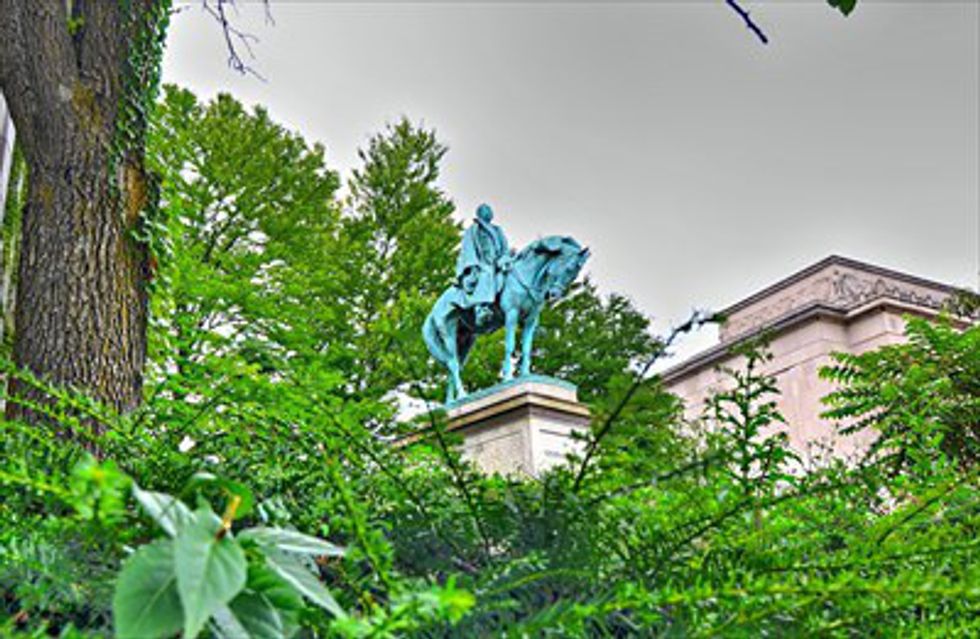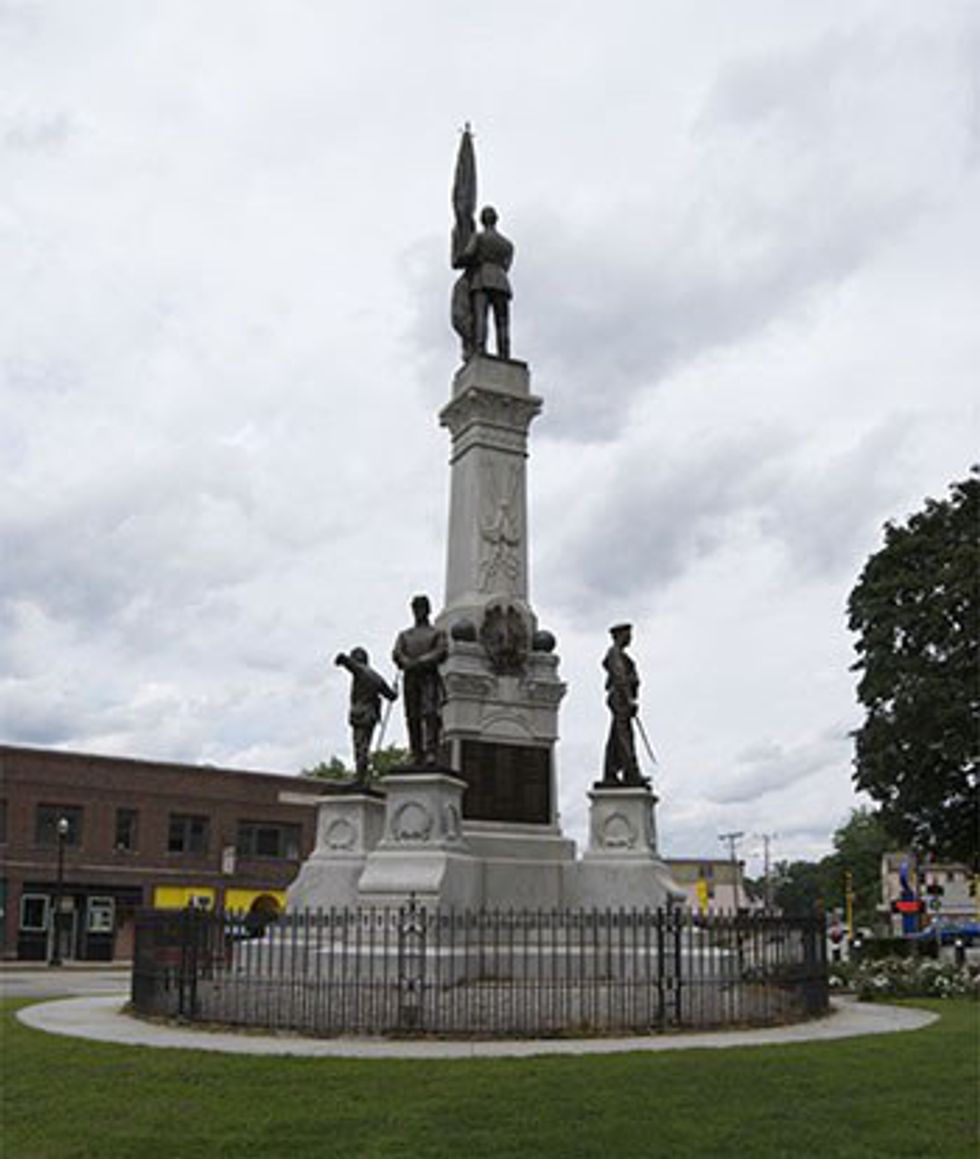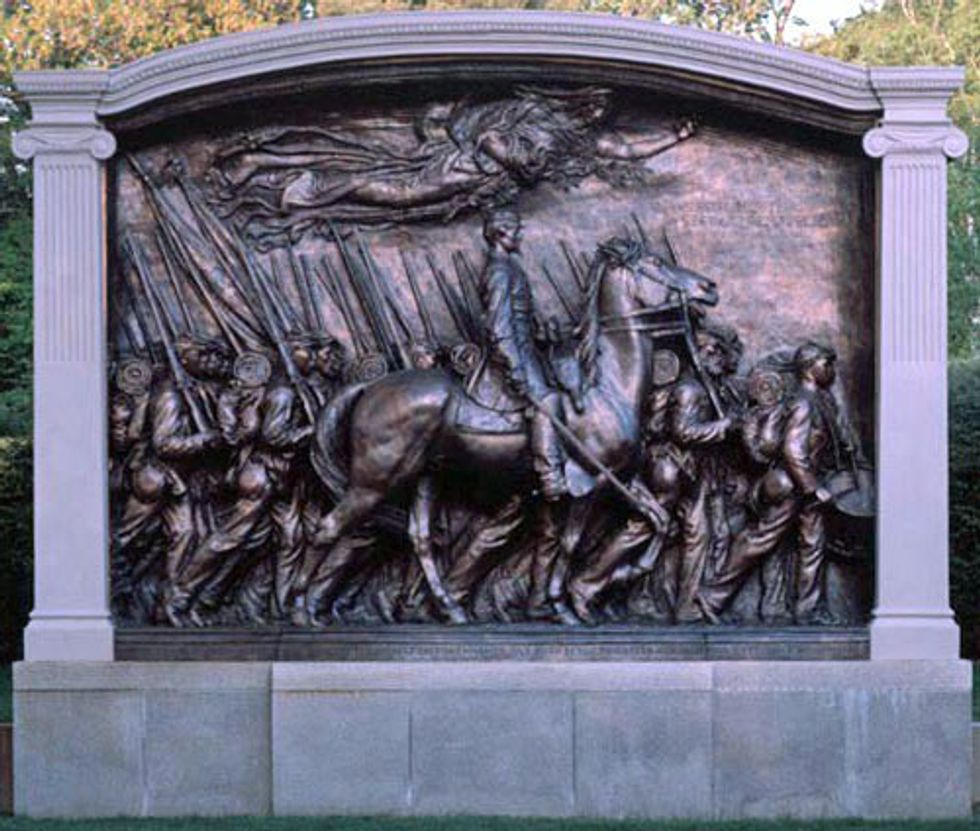Whether it be driving in your car or taking a stroll around the neighborhood, we often see large monuments of Civil War soldiers, but rarely know their importance. Many of these monuments and memorials are created and dedicated in memory of a hero, or heroes, who have served in some way. If you were to see a veteran today who risked their life for yours, you would more than likely want to show your gratitude by shaking their hand or simply saying "thank you". These are small, yet meaningful, ways to show our gratitude to someone who is considered a hero. It is safe to assume that everyone would want to show their gratitude to someone who risked their life for ours, however we often times overlook these heroes because they served us so long ago. In order to show our appreciation for heroes like these, whether in modern or past history, we should be able to at least recognize who these people are on these monuments/memorials. Just by acknowledging these soldiers, we do our part in society to not forget these heroes and what they preserved for our country.
1. Major General Devens Monument (Worcester, Massachusetts)

Located in Worcester, Massachusetts, just outside the old Worcester County Courthouse stands a 25 foot high bronze equestrian statue of Major General Devens. The statue was constructed by Daniel Chester French and Edward Clark Potter and was dedicated on July 4, 1906. In 1848, having been involved in the Whig Party, Devens was elected as a state senator of Massachusetts. After hearing about Senator Charles Devens, President Millard Fillmore promoted Devens to United States Marshall in 1849. Not long after, Charles Devens participated as a lead role in the "Sims Tragedy" where an escaped slave from Georgia, named Charles Sims, was to be returned back due to the Fugitive Slave Act of 1850. After an unsuccessful attempt to buy back Sims' freedom, Thomas Sims was sent back to Georgia to be sold into slavery under a new master.
Many years later, Devens would appoint Thomas Sims to a position in the United States Department of Justice, years after escaping Georgia for a second time in 1863. In 1853, Devens moved to Worcester to practice law until the start of the Civil War and in 1861, he was appointed Colonel of the 15th Massachusetts Volunteer Infantry. Soon after having been wounded at the Battle of Ball's Bluff, Devens was promoted to Brigadier General in command of the First Brigade, First Division of the Army Corps. Having been moved around several more times, Devens was recommended by General Ulysses S. Grant to become Major General of the United States Volunteers stating that "He has proven himself one of the most gallant and devoted officers, keeping with his command always when it was in the field and when he was in a condition rendering him entirely unable to walk or ride on horseback." Secretary of War Edward M. Stanton disagreed with Grant and the major general was never promoted. On June 6th, 1866, Devens was honorably discharged from service at the rank of Brevet Major General.
2. Civil War Memorial (Webster, Massachusetts)

Not too far from Worcester stands a 40 foot memorial outside the Webster town hall. The statue has four bronze soldiers on at the base, signifying the four branches of the military: artillery, navy, cavalry and infantry. Erected at on top of the pedestal stands a bronze flag bearer. On each side of the monument are the names of the Webster soldiers who served in some way during the Civil War. The monument was created by Finn Haakon Frolich and J.N. White & Sons. Costing $16,000 dollars at the time, the monument was dedicated on July 7th, 1907.
At the dedication was Clara Barton, founder of the Red Cross, from Oxford, Massachusetts. According to legend, the soldiers buried many of their artifacts underneath the memorial in a capsule. While there may not be any secret treasures underneath, the memorial is surely a treasure in itself. Unfortunately this treasure is often overlooked by many residents as they drive along a busy Main Street. Hopefully as more understand the rich history behind this memorial, more will begin the understand its significance and honor these heroic soldiers who answered the call of duty.
3. General William F. Draper Monument (Milford, Massachusetts)

Within the town of Milford, Massachusetts stands General William F. Draper upon a horse. The monument was given to the town by the general's wife, Susan, two years after his death. The famous Daniel Chester French, known for designing the Abraham Lincoln statue at the Lincoln Memorial, also designed this work of art. General William F. Draper answered the call and was enlisted in the 25th Massachusetts Volunteer Infantry; he was 19 years old. On May 6th, 1864, Draper was shot through the body and captured during the Battle of the Wilderness. Fortunately for the soldier, Draper was eventually recaptured by fellow soldiers and promoted to lieutenant colonel. After the war, Draper was promoted to brigadier general and resigned from the military. Having lived a full and heroic life General William F. Draper died on January 28, 1910 in Hopedale, Massachusetts.
4. Robert Gould Shaw Memorial (Boston, Massachusetts)

If you have ever been to the Massachusetts State House then you have probably noticed the rather large bronze memorial across the street. Constructed by Augustus Saint-Gaudens in 1884, the sculpture portrays the the 54th Massachusetts Regiment marching down Beacon Street on May 28th, 1863 The monument is named the Robert Gould Shaw Memorial, after the colonel of the 54th Massachusetts Regiment. The 54th Massachusetts Regiment was the first official African American regiment of the war.
Often watched in history classes, the 1989 film Glory portrayed the regiment up until their most distinguished battle at Fort Wagner in Morris Island, South Carolina. During the battle, Colonel Shaw was shot three times through the chest while encouraging his men to move forward; he died almost instantly. Among the wounded was Sergeant William H. Carney who was credited with protecting the regiment's flag from the Confederates. Sergeant Carney would eventually go on to be the first African American to receive the Congressional Medal of Honor.

























